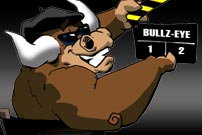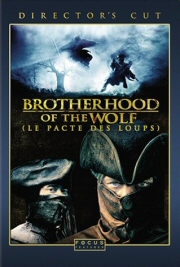 With the temperature dropping, it's time to find someone to keep you warm. Find your hookups with our online dating guide!
With the temperature dropping, it's time to find someone to keep you warm. Find your hookups with our online dating guide!
- Rated NR
- Action
- 2002
- Buy the DVD
All photos © Universal
Reviewed by Bob Westal
()
ithout a doubt, the strangest thing about this lavish, six-year-old international cult hit (an eccentric blend of Hammer-style period horror and chop socky à la Française) is that it’s -- yes -- “inspired by true events.” Really.
As “Brotherhood” gets under way, it’s the late 1760s and Grégoire de Fronsac (Samuel Le Bihan), an emotionally scarred ex-soldier and macho-man action-guy naturalist, and his faithful Iroquois companion, Mani (Mark Dacascos), a cross between John Redcorn of “King of the Hill” and Bruce Lee, arrive from the court of King Louis in the redneck mountain province of Gevaudan to track down a mysterious beast who has been slaughtering local peasants. While a young nobleman hep to the ways of the Enlightenment (Jérémie Renier) assists Fronsac, most of the locals are far less accommodating. Most notably, there is Jean-François de Morangias (Vincent Cassel), a one-armed young count whom, among other psychological issues, is somewhat overly protective of his gorgeous younger sister, Marianne (Émilie Dequenne). Naturally, Fronsac has instantly fallen for the beauteous, virtuous redhead, but since “Brotherhood” is French and not American, that doesn’t prevent him from keeping sexy company with Sylvia (Monica Belluci), a brilliant and bounteous super-prostie with an agenda of her own.
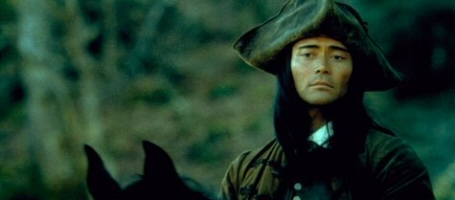
Now, “Brotherhood of the Wolf” certainly has its share of fans and enough wacky genre-blending to interest any open-minded geek, but as the film’s conspiratorial plot unfolds, it proves to be a surprisingly serious tale that could definitely have benefited from a much lighter directorial touch and some witty dialogue. Screenwriter Stéphane Cabel provides an excess of intrigue, a dash of European anti-clericalism, and a decent mystery – not too surprising given that actual killings in the Gevaudan province remain a mystery to this day. (Wolves have been blamed – but if you know much about those highly intelligent wild dogs, you know that’s extremely unlikely.) Still, there’s little in the way of rising tension, and director Christophe Gans (“Crying Freeman”) seems to choose style over storytelling at nearly every turn. On the other hand, the beast itself is well handled and nicely terrifying (a judicious combination of CGI, animatronics from Henson Studios and less-is-more editing), and there are moments when the film starts to take flight as a semi-historical variation on monster/nature attacks flicks.
Still, “Brotherhood” is consistently mediocre on the human level, despite a mostly talented cast. Hawaiian-born actor/martial artist Mark Dacascos does a fine job in the anachronistic ass-kicking department; Monica Bellucci and Émilie Dequenne deftly embody the old whore/Madonna complex; and Jérémie Renier and Vincent Cassel (“Eastern Promises”) do just fine as the thoughtfully affable sidekick and the way-messed-up aristo. That leaves star Samuel Le Bihan as a sort of cynical Indiana Jones by way of Ron Kovic. While Le Bihan is a popular actor, his performance here is mainly posturing, and it harms the film. The real problem with “Brotherhood of the Wolf,” however, is direction that emphasizes style and action over coherent story and characterization, resulting in a conclusion that is vague and unsatisfying without being the slightest bit intriguing.
Two-Disc Director’s Cut DVD Review:
Since this is my first viewing of “Brotherhood,” I can’t compare this Universal director’s cut to the R-rated theatrical U.S. release, but even with an additional nine minutes, I will say that gorehounds shouldn’t get excited just because this version is unrated. Speaking as someone who has issues with excess gore, I can say that what I saw was relatively tame – I didn’t close my eyes even once. “Brotherhood” buffs should have fun with the extras, however, though they mostly appear to be holdovers from an earlier three-disc Canadian edition. There are 40 minutes of deleted scenes with detailed commentary from director Christophe Gans. The second disc contains a detailed video documentary delving into the film’s creative and technical aspects, alongside a more intimate “making of” film shot during the actual filming. It also includes storyboards and an 18-minute interview with naturalist and author Michel Luis, who discusses the real-life killings and offers his own theory. I can’t speak to the validity of Luis’s argument, but he is right that there is still definitely room for a more realistic drama about the Gevaudan killings.
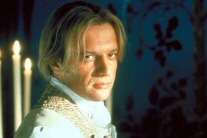 |
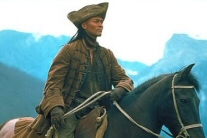 |
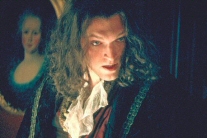 |
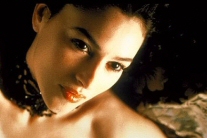 |
You can follow us on Twitter and Facebook for content updates. Also, sign up for our email list for weekly updates and check us out on Google+ as well.
